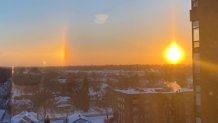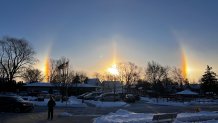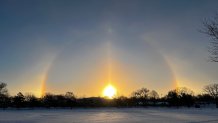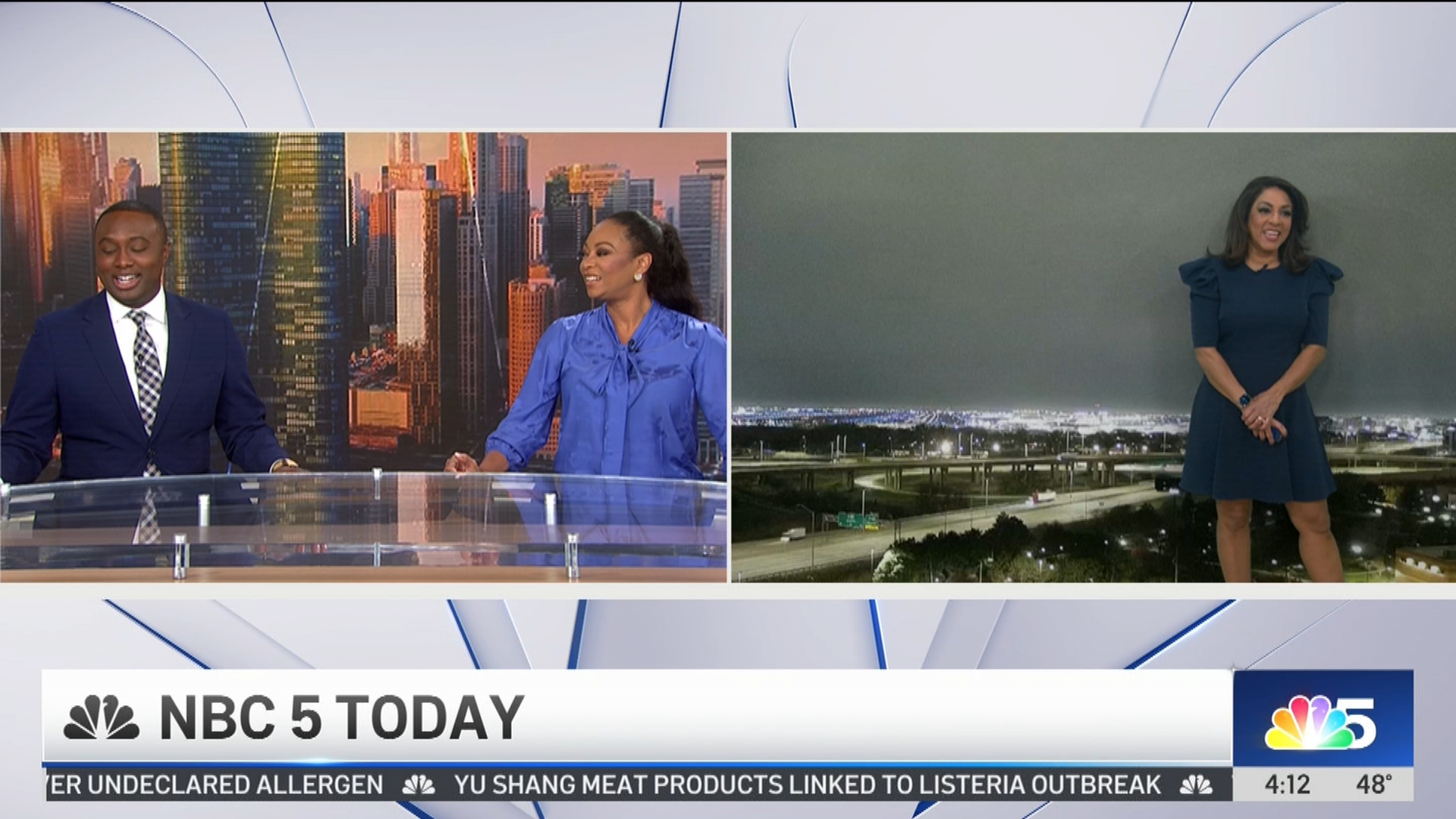If you looked into the sky Tuesday morning, chances are you saw a bright, potentially colorful display that can only happen when the conditions are just right.
It's called a sundog.
But what exactly is it and how is it formed? Here's an explainer:
What is a sundog?
According to the National Weather Service, "sundogs are colored spots of light that develop due to the refraction of light through ice crystals."
The refractions are located about 22 degrees to the right, left, or on both sides of the sun and can appear rainbow-like, with red seen closest to the sun and blue to the outside. Some, however, may simply appear white.
"Sundogs are also known as mock suns or parhelia, which means 'with the sun,'" the NWS reports.
Weather
The phenomenon is similar to sun halos or pillars, which are also considered "atmospheric optical effects."
How do sundogs form?
Feeling out of the loop? We'll catch you up on the Chicago news you need to know. Sign up for the weekly Chicago Catch-Up newsletter.
"In the atmosphere, under certain conditions, water drops and ice crystals can act as a prism, allowing us to see the various colors that make up visible light," the NWS reports.
According to the Almanac, sundogs appear when sunlight passes through a thin veil of ice crystal clouds, which acts as a prism and refracts the light.
Not to be confused with a rainbow, which forms when "drops of rain act as prisms, breaking sunlight into a multitude of colors."
What else to know
According to Space.com, certain conditions make sundogs more likely.
They most often appear near sunrise or sunset, as the sun is closer to the horizon.
"When the sun is high in the sky sunlight can't pass through ice crystals as easily," the publication reports.
Winter is also more likely to see sundogs, since ice crystals are needed.
See the images









